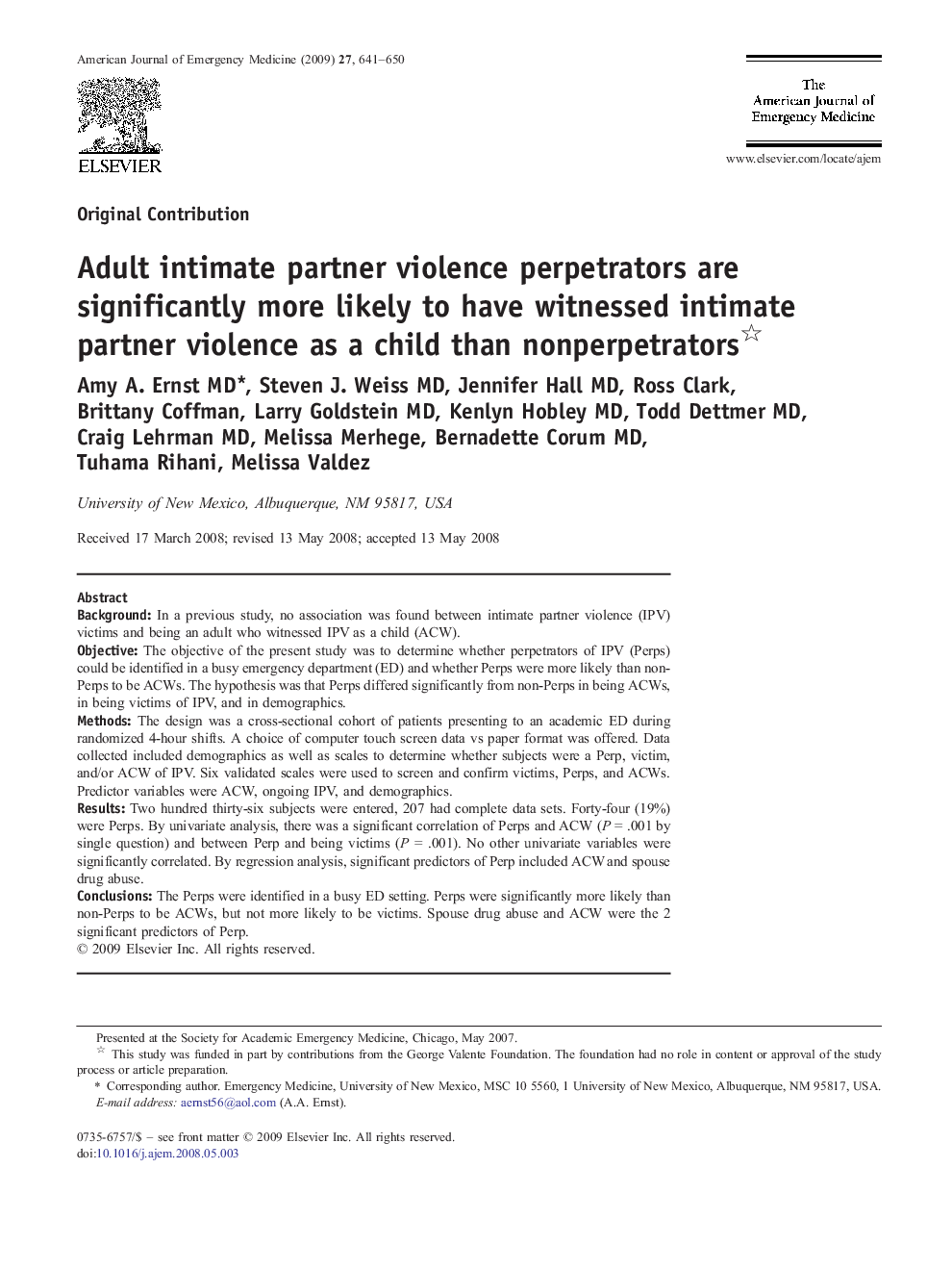| کد مقاله | کد نشریه | سال انتشار | مقاله انگلیسی | نسخه تمام متن |
|---|---|---|---|---|
| 3227304 | 1588165 | 2009 | 10 صفحه PDF | دانلود رایگان |

BackgroundIn a previous study, no association was found between intimate partner violence (IPV) victims and being an adult who witnessed IPV as a child (ACW).ObjectiveThe objective of the present study was to determine whether perpetrators of IPV (Perps) could be identified in a busy emergency department (ED) and whether Perps were more likely than non-Perps to be ACWs. The hypothesis was that Perps differed significantly from non-Perps in being ACWs, in being victims of IPV, and in demographics.MethodsThe design was a cross-sectional cohort of patients presenting to an academic ED during randomized 4-hour shifts. A choice of computer touch screen data vs paper format was offered. Data collected included demographics as well as scales to determine whether subjects were a Perp, victim, and/or ACW of IPV. Six validated scales were used to screen and confirm victims, Perps, and ACWs. Predictor variables were ACW, ongoing IPV, and demographics.ResultsTwo hundred thirty-six subjects were entered, 207 had complete data sets. Forty-four (19%) were Perps. By univariate analysis, there was a significant correlation of Perps and ACW (P = .001 by single question) and between Perp and being victims (P = .001). No other univariate variables were significantly correlated. By regression analysis, significant predictors of Perp included ACW and spouse drug abuse.ConclusionsThe Perps were identified in a busy ED setting. Perps were significantly more likely than non-Perps to be ACWs, but not more likely to be victims. Spouse drug abuse and ACW were the 2 significant predictors of Perp.
Journal: The American Journal of Emergency Medicine - Volume 27, Issue 6, July 2009, Pages 641–650